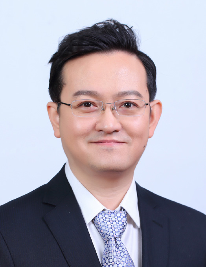Diagram and phase transition features
Yang Bai*, Jingjin He, Yanjing Su, Lijie Qiao
Beijing Advanced Innovation Center for Materials Genome Engineering, Institute for Advanced Material and Technology, University of Science and Technology Beijing, Beijing 100083, China
EXTENDED ABSTRACT: A phase diagram is a critical tool in materials science. Understanding phase transitions in systems with structural, electronic, quantum mechanical and topological degrees of freedom is an important part of modern physics and materials science. As a description of material behavior and properties, the phase diagram provides insight into physical forces underpinning a material system. Thus, capturing the physics of phase transitions via the corresponding phase diagram is a problem of considerable importance both theoretically and experimentally. Traditionally, the phase diagram is drawn based on a large number of experiments, and changes in macroscopic properties, such as specific heat, lattice parameter and polarization, are interpreted as signatures of phase transitions to demarcate phase boundaries. Drawing a complete phase diagram for a multi-component system is therefore a difficult task as the complexity increases exponentially with each additional degree of freedom but establishing it often requires a large number of experiments, especially for multi-component systems. In this work, we propose a machine learning strategy to rapidly and accurately predict the phase diagram and the phase transition features by combining classification and regression methods. For the sample of a multi-component ferroelectric system (Ba1−x−yCaxSry)(Ti1−u−v-wZruSnvHfw)O3. Based on literature data, we construct by classification a diagram that maps composition and temperature to the phase, and identify octahedral factor, Matyonov-Batsanov electronegativity, the ratio of valence electron number to nuclear charge and core electron distance (Schubert) for the A site and B site cations as the dominant physical descriptors. A deep neural network regression (DNN) model is adopted to more accurately predict phase transition temperatures, i.e. the phase boundaries, so that a phase diagram can be established in composition space. In the region of phase boundaries, the relative proportions of coexisting phases are also well estimated by the prediction probability after bootstrapping using a classification model. Furthermore, the dispersion degree of phase transition of materials can be obtained by combining the predictions of phase diagram and the dielectric temperature spectrum. That is, more phase transition features are obtained assisted by machine learning. Our predictions are validated by experimental synthesis and characterization in a typical sample of (Ba0.96Ca0.02Sr0.02)(Ti0.98-xZr0.02Hfx)O3. Our work provides a direct route to rapidly establish phase diagrams for multi-component systems.

Yang Bai is a Professor in the Institute for Advanced Materials and Technology at University of Science and Technology Beijing (China). He received his B.S. and Ph.D. in Materials Science and Engineering from Tsinghua University, in 2001 and 2006. In 2012, he was voted as the National Program for Support of Top-Notch Young Professionals, and was selected in the New Century Excellent Talents plan (MOE). In 2015, he was voted as the Best Scientific Research Workers by the Chinese Association of Young Scientists and Technologists. In 2019, he won the 13th Youth Science and Technology Award of Chinese Ceramic Society. Also he won one first prize and one second prize of Natural Science Award of Ministry of Education. Currently, he is executive director of Metamaterials Society of Chinese Materials Research Society, deputy secretary general of Electronic Components Society of Chinese Institute of Electronics, fellow of Advanced Ceramics Society of Chinese Ceramic Society, and fellow of Functional Materials Society of China Instrument and Control Society. He also serves as advisory panel in Journal of Physics D: Applied Physics, editor of Journal of Advanced Ceramics, subject editor of International Journal of Minerals, Metallurgy and Materials, young editor of SCIENCE CHINA: Technological Sciences, and peer reviewer of more than 80 international academic journals including Nature Comm, Adv Mater, Mater Today and so on.